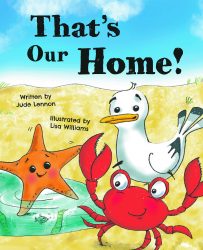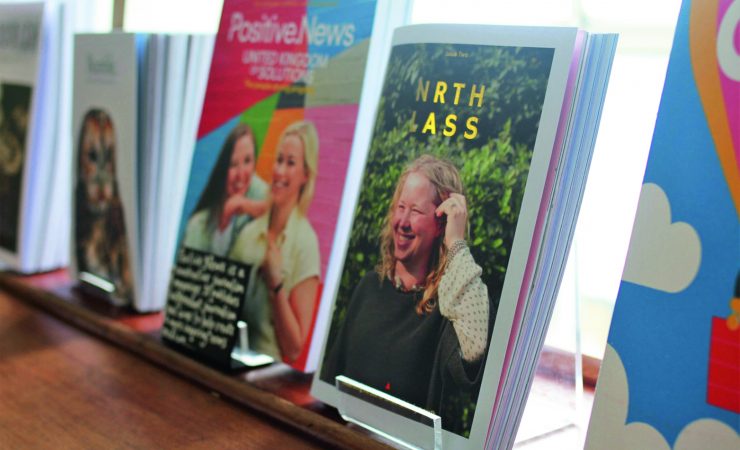Helen Dugdale caught up with an independent book publisher, the editors of a leading independent magazine and a printer to get the scoop on the publishing sector’s blossoming dalliance with digital print
In late 2019 media company Reuters published a three-part series examining the state and future of print. It found that print is proving particularly popular amongst the Gen Z fraternity (roughly, those born between 1996 and 2010, so now anywhere from late primary school to young adults), who although they were born into a digital world, have a strong sense that print is valuable.
Worldwide over the last five years a passion for print has been ignited, particularly with new, small sophisticated magazines popping up. The Reuters report showed that Gen Zers ‘trust print publications over other media to deliver credible information.’
In agreement with Reuters, the 2019 Ofcom News Consumption Survey found that magazines are the UK’s most trusted source of news across all generations, stating that ‘consumers are very aware that magazine publishing doesn’t follow the same rules as social media and blogging, where speed trumps fact-checking, editing and refining – all the necessary processes before something makes it into print.’
Mark Gray, managing director of Wakefield-based Charlesworth Press says the findings of the two reports are great news for both digital printers and publishers: ‘Digital printing has made book publishing widely accessible, meaning that anyone can get a book printed. In the past, it
was very difficult to get a book published and you were at the mercy of publishers determining what they thought would sell. Today you can write, print and promote a book yourself, especially as social media and online channels have opened up more ways for people to reach their desired audience directly.’

Mark Gray of Charlesworth
Press – it’s important for printers to understand and respect the work that authors put in
That might cover the production and sales parts of the operation, but how do would- be self-publishers find suitably equipped and sympathetic printers? One route might be via a specialist intermediary like Team Author UK. Founded in 2016, it’s a publishing service which helps independent authors to publish their books. Its offering differs from other indie publishing services as the author is the publisher and retains all rights and royalties to their book. Founder Sue Miller explained why digital print is perfect for
her business model: ‘Digital is generally the preferred choice of printing for independent publishing. Nowadays, indie authors don’t need to buy loads of books and keep them in stock. You can print and buy just 20 copies digitally and have the sent them to you.’
As the Reuters and Ofcom studies show, the magazine world is also alive with niche and independent publications. Nrth Lass is one of these, created by friends Jenna Campbell and Jess Howell after they noticed a gap in the market
for celebrating the lives of women living in the north of England, and set to work filling that hole.
‘We felt that there was not enough editorial coverage of the amazing achievements of women living and working here and that if we wanted to read these stories then we would have to curate that platform. The magazine is completely self-funded, a true passion project which means that we have to do a great deal of planning and organising to get it to print each time. In 2017, print magazines and zines were having a bit of a renaissance and it came together quite naturally. At the same time, we both love print and reading a magazine gives you the opportunity to step away from digital distraction,’ said Ms Campbell.
Ms Howell explained the pull for creating a physical magazine, rather than opting for a website: ‘Online content is brilliant for being able to be accessed immediately but it’s just as quick to be dismissed and lost amongst other content. Sitting down to read a printed article which has been chosen specifically to be included is a different experience; it gives the reader the opportunity to absorb the content at their own speed and for us, it means that we get to collate articles, designs and images that work as a collective rather than just one-off online pieces.’
Why publishing loves digital print
Whether it is a book or a magazine, digital print sits at the top of the list for when writers and authors are looking for ways of bringing their work to life. ‘There is a huge amount of flexibility with digital printing and ultimately it puts independent publishers in complete control,’ adds Mark Gray of Charlesworth Press. ‘With digital, you can print a one-off sample so you know exactly what your book will look like, before doing a full run. You can also start off with
small print runs – testing the water on sales and demand – before committing to larger volumes. There is also a huge amount of flexibility for offering hard- and softback options, as well as being more creative with your content by offering personalisation or things like limited edition covers.’

One route to self-publish- ing is via intermediaries like Team Author, who connect writers with printers and handle some of the technical issues involved in artwork preparation
Using a service such as Team Author can help take the confusion out of knowing where to start when it comes to choosing a printer. As Ms Miller explains, it can be as easy as sending the print house a digital copy. ‘For our authors, particularly children’s writers, we use UK Book Printing and Biddles. The authors upload the final print-ready PDF of the book to the printer’s website, who will then print them and send them back. It’s usually a straightforward process. There isn’t the need to have close contact with the printer, writers can just do it all themselves online unless there is a technical issue.’
For independent magazine creators, finding a printer is just one in a long line of decisions that they need to make. For the Nrth Lass duo, they knew they wanted a company nearby, as Ms Campbell explained, ‘We were initially based in West Yorkshire so when it came to selecting a printer, we looked quite close to home. Price was the primary concern, but also being able to have open conversations with the printer about the specification as well as the look and feel.’ Ms Howell said it was really important for them both to feel comfortable with the printer because when they started, everything was new. ‘During the printing process, we need to repeatedly go back and forth between our designer and printer, so having approachable people behind the business to work with is always a huge consideration.’
One route to self-publish- ing is via intermediaries like Team Author, who connect writers with printers and handle some of the technical issues involved in artwork preparation[/caption]
Relationships still matter
For many indie authors choosing an online printer makes sense; after sending the finished masterpiece all that is left to do is sit back and wait for the doorbell to ring with their book delivery. The view at Team Author is that it is possible to ‘go it alone’ and for authors to handle the printing of their own books, but that there is also a real benefit in using a publishing house: ‘What many writers and authors don’t realise is that if you’re using an online printer you need to make sure that all the files are correct. For example, every indie authors wants to promote their book on Amazon, which uses North American paper sizes, but most UK printers aren’t set up for the difference in paper size. That’s why lots of authors use a company like [us] – it means we can deal with any technical issues,’ says Ms Miller.
Team Author, like other similar publishing houses, acts at the go-between, taking the technical stress out of the print and production process, then step aside. The authors pay the printer directly for the books or other publications.
Mr Gray is a strong believer that magazine editorial teams and authors should look to develop a close working relationship
with their printer. ‘Printers play a crucial role in filling in the gaps that take a book from a concept to reality. At Charlesworth, we work closely with the customer to ensure that we can make the print as cost-effective as possible – advising on print run numbers or if a print-on-demand approach would be more beneficial. We pride ourselves in working closely with self publishers to really guide them through the print process, so they have a positive experience from start to finish.’
Ms Howell thinks that the relationship between magazine and printer is more of a partnership than a service: ‘Quality should be the main aim and to achieve that, our written and visual content should match the printing service and vice- versa. We place a huge amount of trust in our printer; we spend months gathering content and perfecting every little detail and we need to know that the printer sees the same vision and delivers to the same standard.’
‘The relationship between the magazine creators, designer and printer is a very important one because they all need to communicate to nail the final offering,’ added Ms Campbell. ‘Being able to have an open dialogue with our designer and printer ensures that what we put out on shelves is exactly what we envisaged.’
For creative types looking to find their ideal digital printer, Mr Gray has some pearls of wisdom: ‘Always look to work with a printer that truly values what you are creating. Many people take months or even years to write a book and a printer has to appreciate what that means to the author and what they are trying to achieve. A printer should make the printing process as straightforward as possible – providing advice and guidance and being transparent on cost and the benefits of differing sized print runs.’





